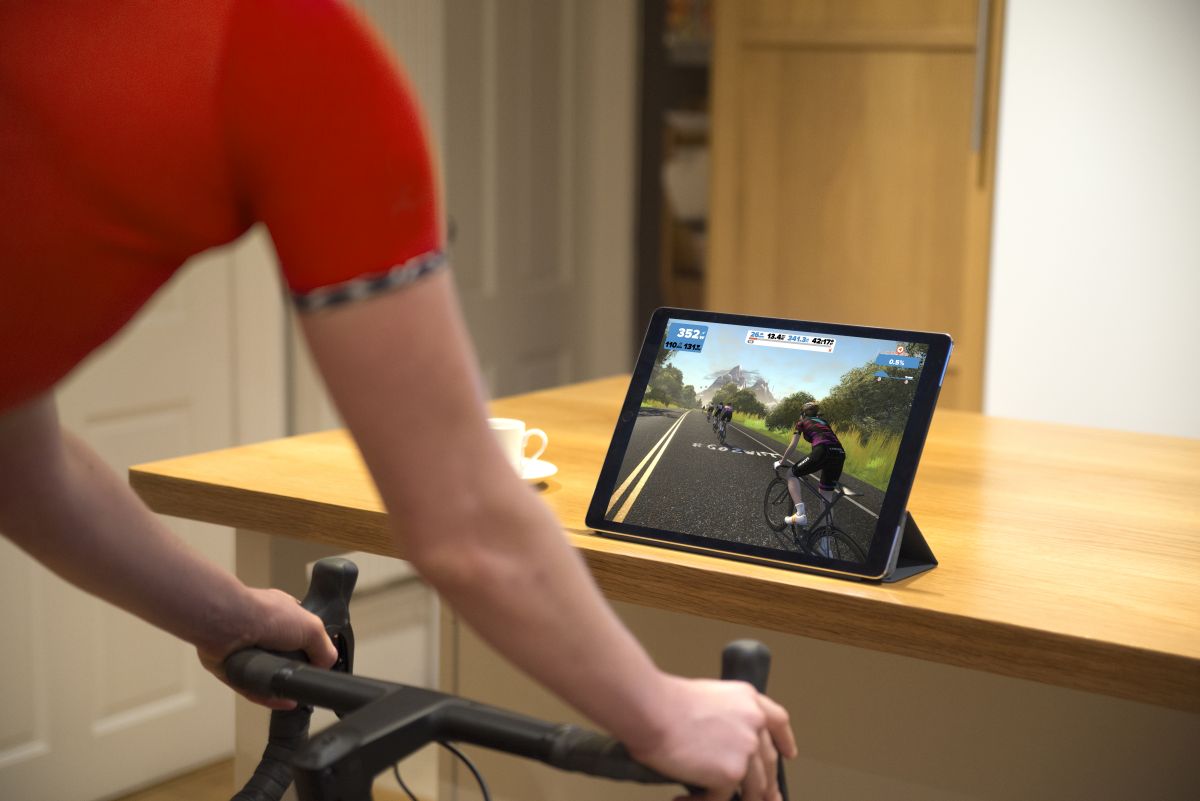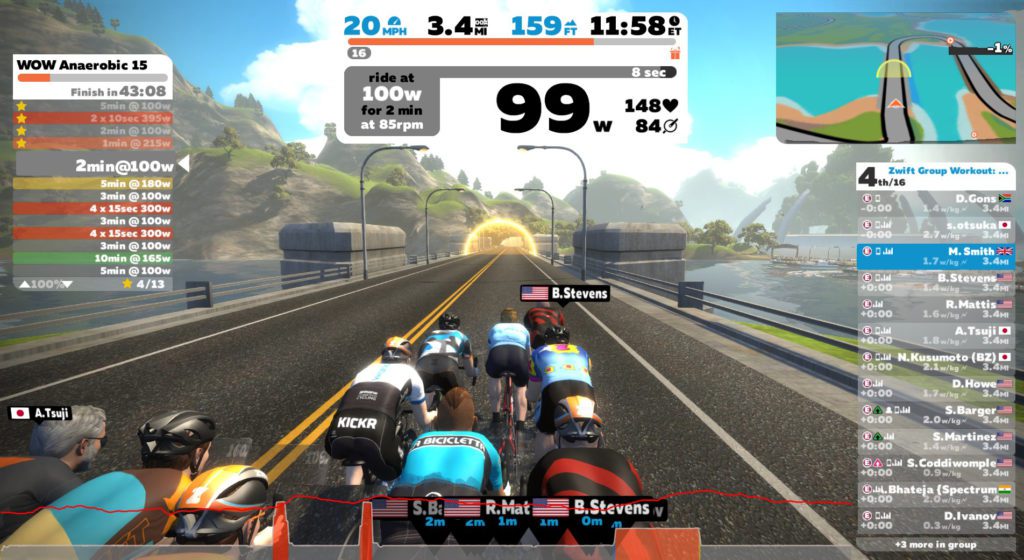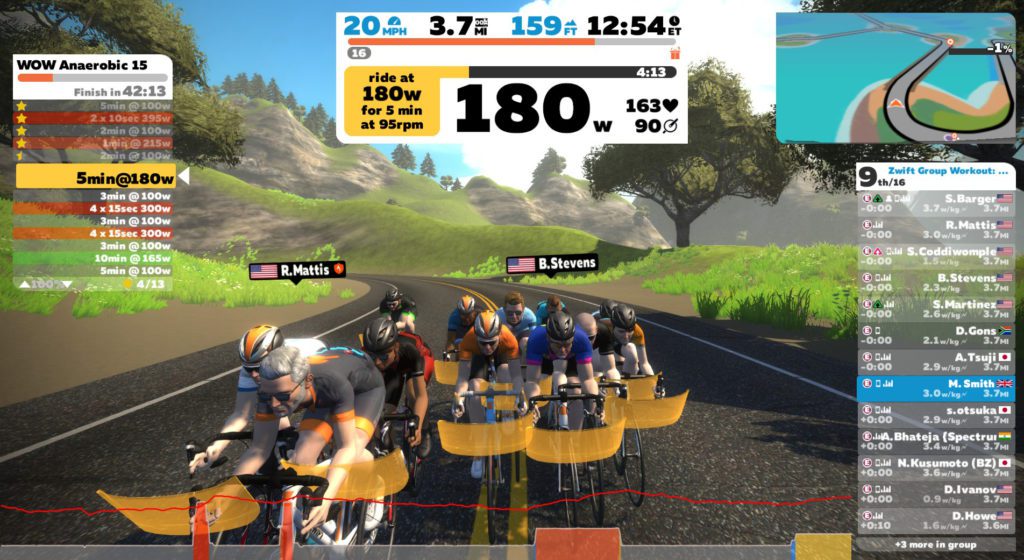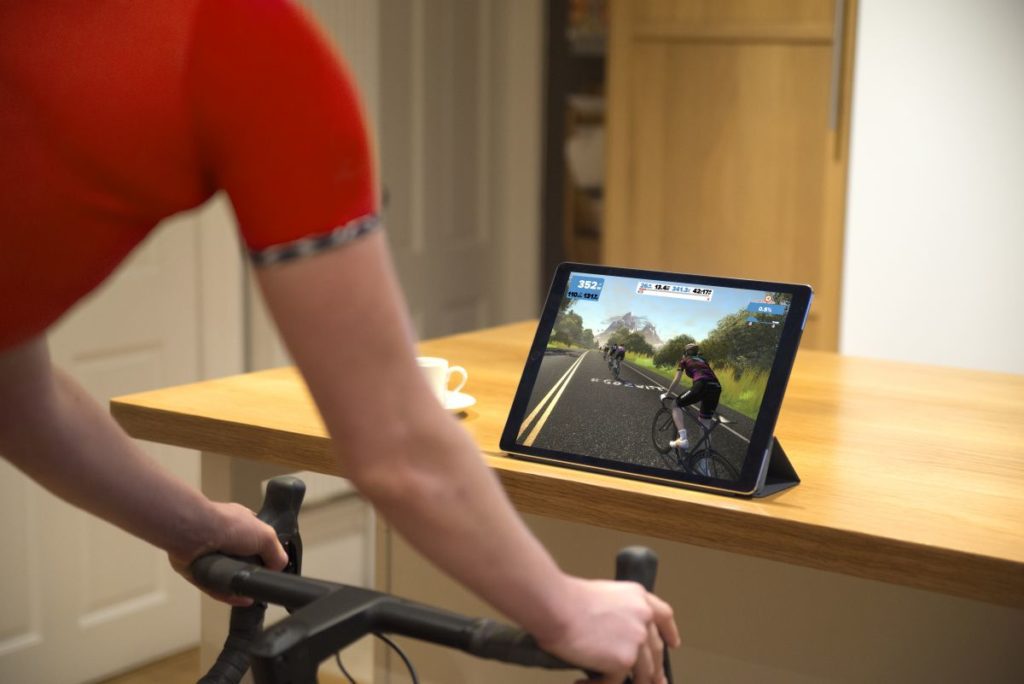Can I Zwift with this?
How to get started on Zwift and what you need to get more immersed in the virtual training world

Zwift makes indoor riding more fun and interactive, motivating you to ride more while helping you to get fitter. Alongside thousands of riders around the world, including top professionals, you can gain entry to the virtual training grounds of Watopia, London, Richmond and beyond.
If you’ve decided it’s time to start training with Zwift, you might be wondering if the gear you have will work. To begin your riding in the virtual training world, there are a couple of basic things you will need for your setup. The more technically advanced your setup, the richer your experience you can get, but you’d be surprised at many benefits you get from a bare bones setup.
Your indoor riding system can be budget friendly or the closest to road riding that you can get on a trainer. Here’s the rundown on what you need to get started on Zwift and how you can enhance your experience:
What you need to get started with Zwift
Your bike
Unless you have a compatible indoor stationary bicycle, you can use your own bike to ride on Zwift. Your familiar steed, with the right fit for you, will take you into the virtual world with the help of a trainer.
A trainer
Ideally, you either have a power meter or smart trainer to measure your power output during your rides. A smart trainer will adjust the resistance you face as you climb virtual ascents. If you don’t have a high-tech trainer, Zwift can calculate estimated power output based on your trainer model, and the data from a speed and cadence sensor. Zwift is also compatible with a select few rollers.
A platform to run Zwift
Zwift can run on your laptop, Mac and iOS devices, such as an iPad (iPad Air or higher, iPad Pro, iPad Mini 2 or higher, or iPod 6) or iPhone (iPhone SE, iPhone 5S or higher) and Apple TV fourth generation and newer. In order to connect your power meter, smart trainer or sensors to the app, you’ll need devices that can connect via Bluetooth Smart or ANT+. If you are using a laptop, you may need an ANT+ dongle, while iOS devices can receive Bluetooth Smart signals but you’ll have to make sure your trainer and power can transmit to these machines. The Zwift experience will be more immersive if you have a big screen TV, but in a pinch, you can use your iPhone for the ride.
Cadence and speed
If you don’t have a smart trainer, you will need a speed and cadence sensor on your bike to ride Zwift.
Heart-rate monitor
If you aren’t training with power, but have your cadence and speed sensors set up, a heart-rate monitor is the best training tool you can use. A heart-rate monitor can help you get the most out of riding on Zwift and allow you to do more structured workouts. It will also show other competitors in races and events you haven’t altered your weight to get a better virtual performance. A PowerTap PowerCal heart-rate strap estimates your power and can also be used instead of a cadence and speed sensor.
Power meter
A power meter is a recommended tool if you are serious about making big improvements to your fitness. For indoor training, it can pay even bigger dividends by keeping you motivated and focused. Additionally, it will help you get the most out of your Zwift experience. You’ll be able to train efficiently and make measured, calculable improvements via structured and scientific training methods. A power meter will help Zwift display your efforts accurately so your indoor riding can best be reflected in your speed and movement in the virtual world.
A fan, towel and water bottles
While a fan is not necessary, having it running will make your indoor riding more enjoyable by cooling you down and controlling your sweat. A towel will also help you to manage sweat. Finally staying hydrated while riding, whether indoors or outdoors, is vital.
How immersive is my setup?
While there are numerous combinations of gear that will have you riding on Zwift, some setups will take you deeper into the virtual world than others.
The starter setup
Perhaps the most basic setup for Zwift includes a laptop to run the program, a classic trainer with no electronics and an ANT+ dongle to capture the metrics from your speed and cadence sensors so your real-world effort can be translated into movement in the game. This setup is great if you already have a trainer and want to start riding with your friends.
The advantages of this setup are that you can start training with Zwift without any major purchases. Additionally, if you have a heart-rate monitor, you’ll certainly be able to do structured workouts and get moving in the game. Sure, the data won’t be as rich that from a smart trainer of power meter. Still, it will be consistent. There’s also zPower, a measurement of effort that Zwift uses for training. It’s not replacement for a power meter. Yet, for many riders, it can be enough to really get more out of the experience. It is, after all, immersion in the program and the ability to train with your friends that will have you riding more and enjoying yourself.
To get a bit more out of a setup such as this, consider putting a power meter on your bike instead of upgrading any of your indoor riding equipment. Doing so will allow you to train with data that is close to universal (300 watts is 300 watts on a real or virtual road) and take full advantage of the built-in Zwift workouts. Come spring time you can then take your training outside and have a baseline for your on the road performances. Get an HDMI cord to relay our laptop screen onto your TV for a better viewing experience of your riding in the Zwift world.
The upgrade: Power meter trainer and iOS device
A trainer with a power meter, especially one the broadcasts in both ANT+ and Bluetooth, is a great option for training indoors. Maybe you have an iPad you can run Zwift on instead of needing to prop up your laptop. Power numbers will immediately improve your Zwift experience though you still won’t get the resistance changes that a smart trainer can offer. A smart trainer is a worthwhile investment. It’s the best way to make the riding indoors feel more like the outdoors.
The dream Zwift setup
What does a dream pain cave look like? Perhaps a large flat-screen TV with Apple TV running Zwift paired with a smart, direct-mount trainer. Zwift will change the resistance on your trainer as you climb Watopia’s hills while all your data is calculated by the trainer. A fan blows cold air onto you ensuring you don’t overheat. The big screen TV allows you to see the names of all your friends easily as you all enjoy the virtual landscape of Zwift. You can appreciate the little details such as the new jersey you’ve selected and the rad hairdo you’re rocking. Via a smartphone app, you can brag to your friends about the new bike you’ve earned.
What’s your Zwift pain cave setup? Let us know in the comments below or tag us in your pain cave pics on Instagram or Twitter with @TriathlonMagazine #TriathlonMagazine




